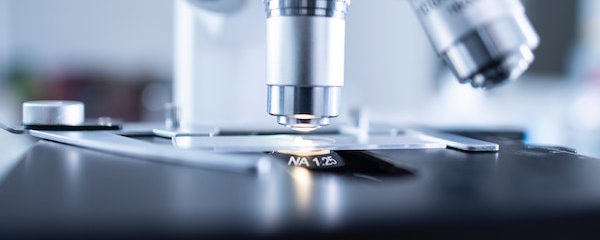Piercing Infections: A Beginner’s Guide to Causes and Treatment May 11, 2020 – Posted in: Informative, Piercing Advice – Tags: ear piercing infection, how to avoid piercing infection, how to spot infection, infected piercing, infection treatments, piercing aftercare practices, piercing infection, piercing infections
Piercing infections highlights:
- Piercing infections can usually be avoided through proper aftercare practices.
- Clean your piercing 2 – 3 times daily, and practice good hygiene overall.
- If a piercing infection does develop, visit a doctor for diagnosis and treatment.
Piercing infections are one of new piercees’ greatest concerns. Luckily, they are easily avoided through proper aftercare. However, piercing infections do happen, sometimes even if you do everything right, so it’s important that you understand the signs. Treatment should be sought as soon as possible, so if you’re concerned that you may have a piercing infection, you will need to seek medical attention immediately.
Here’s a brief guide to piercing infections and what to do if you get one.

Photo by christian buehner on Unsplash
What is an infection?
In basic terms, an infection occurs when harmful bacteria gets into your new piercing and start wreaking havoc. The resulting symptoms—fever, discharge, swelling—are all part of your body’s natural defense mechanisms to get rid of the infection.
When your body works to heal itself, it will pump blood toward the wound in order to bring nutrients that aid in healing. In addition, it produces a clear liquid that helps to flush out harmful microbes. (This is what causes the crusties around a healing piercing.) An infection occurs when there are too many harmful microbes for your body to flush out on its own. As a result, healing processes go into overdrive, and what begins as natural healing will turn into painful symptoms of infection.
Infection symptoms
You must visit a medical professional immediately if you see the following symptoms:
- Excessive swelling, especially weeks after the piercing appointment.
- Green or yellow discharge coming from the piercing. Clear or semi-clear liquid is okay.
- The piercing feels hot or feverish.
- Excessive bleeding, especially weeks after the piercing appointment.
- A lot of pain or discomfort around the piercing site.
It’s important to note that mild versions of the above symptoms may also be a sign of healthy healing. If the above symptoms appeared very slowly, and they aren’t extreme, then it’s likely that your piercing is healing normally. However, if symptoms appear suddenly (e.g. if you go to sleep with a healthy piercing and wake up with bad symptoms), then it’s likely that you are dealing with a piercing infection.
Always play it safe rather than sorry. Infections will only become worse without treatment, so if you suspect that you may have a piercing infection, go to the doctor right away to confirm.
Infections in old piercings
Although infections are far more common in healing piercings, they can develop in healed piercings as well. Infections are simply the result of too many bad microbes in an open wound. If a bad snare ripped open an old piercing, then you may open yourself up to piercing infections. In this case, you should clean it daily with a piercing aftercare saline solution, just like you would with a new piercing. You need to ensure that the wound stays clean and healthy until it has closed up again.
There are other complications that may occur in an old piercing that some people mistake as piercing infections. Dirt and dead skin may build up in the piercing hole, causing blockages or pimple-like pustules in and around the piercing. These do not require medical attention, and they can be treated by cleaning the jewelry and washing the piercing with saline solution until the pustule or blockage goes away.

Photo by Antonio Friedemann on Unsplash
How to avoid infections
Infections are mostly caused by failing to keep your piercing clean. Therefore, you can avoid piercing infections by keeping the piercing clean. Make sure that you use a piercing aftercare saline solution to clean the front and back of the piercing 2 – 3 times daily, make sure that you shower regularly, and in the case of oral piercings, brush your teeth and maintain oral hygiene.
Read more about piercing aftercare best practices here.
Besides keeping your piercing clean, you should also:
- Refrain from touching the piercing as it heals
- Keep clothing, pillows, headphones, and other objects away from the piercing.
- Use clean paper towels or cotton swabs to clean the piercing. Do not use washcloths or towels.
- Stay away from pools, hot tubs, lakes, or other standing water until the piercing has fully healed.
- Maintain aftercare practices until a piercer has confirmed that your piercing is fully healed.
If you have a weak immune system, then you should take extra care to keep your piercing clean. Keep a close eye to ensure that an infection doesn’t develop. If you suspect that one has been contracted, visit your doctor for diagnosis and treatment.
Buy NeilMed piercing aftercare to keep your piercing clean and avoid infections.
How to treat a piercing infection
If you adhere to proper aftercare practices, you most likely will see a happy healing period free from infection. However, bacteria can be relentless, and even if you do everything right, your new piercing can still get infected.
If you believe that your piercing is infected, visit a doctor for treatment. They will be able to ascertain how far along the infection is and whether you will need antibiotics. Because infections can get nasty, do not treat them at home. Instead, have a doctor guide you in the right direction.
Infections are the most common complication when it comes to healing your new piercing. If you understand how infection works, choose a great piercer, and use aftercare products created specifically for piercings, like NeilMed NeilCleanse Piercing Aftercare Solution, then it’s one mountain that you shouldn’t have to surmount.








